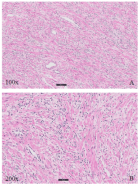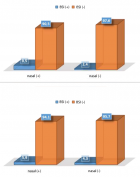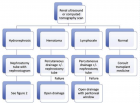About CPE Institute of Cardiology
CPE Institute of Cardiology
Articles by CPE Institute of Cardiology
Diagnostic accuracy of TIMI versus GRACE score for prediction of death in patients presenting with Acute Non-ST Elevation Myocardial Infarction (NSTEMI)
Published on: 22nd February, 2019
OCLC Number/Unique Identifier: 8022255638
Background: Acute Coronary Syndrome describes a spectrum of disease ranging from unstable angina through non-ST-Elevation Myocardial Infarction (NSTEMI) to ST-Elevation Myocardial Infarction (STEMI). Early death in NSTEMI is usually due to an arrhyth... mia. Patients should be admitted immediately to hospital, preferably to a cardiac care unit because there is a significant risk of death.
Objective: To compare the diagnostic accuracy of TIMI versus GRACE for prediction of death in patients presenting with Acute Non-ST elevation Myocardial Infarction.
Material & Methods: This present cross sectional study was conducted at Department of Cardiology, CPEIC, Multan. All patients assessed according to given scores in the two scoring system i.e. TIMI risk score and GRACE score. Then patients were labeled as high or low risk for death. Data was collected by using pre-designed proforma. 2x2 tables were generated to measure the sensitivity, specificity, positive predictive value, negative Predictive value and diagnostic accuracy of TMI Risk score and GRACE Score for prediction of death in NSTEMI patients.
Results: In our study the mean age of the patients was 55.73±9.78 years. The male to female ratio of the patients was 1.6:1. The diabetes as risk factor was found in 145(39%) patients, smoking as risk factor was found in 53(14.2%) patients and hypertension as risk factor was found in 174(46.8%) patients. the sensitivity of TIMI risk was 97.7% with specificity of 92.93% and the diagnostic accuracy was 95.16%, similarly the sensitivity of GRACE risk was 100% with specificity of 95.96% and the diagnostic accuracy was 97.85%.
Conclusion: Our study results concluded that both the TIMI risk and GRACE risk are good predictor of death in patients presenting with Acute Non-ST elevation Myocardial Infarction with higher sensitivity and diagnostic accuracy. However the GRACE risk showed more accurate results as compared to TIMI risk. Show more >
Effects of highest dose of sacubitril/valsartan association compared to lower doses on mortality and ventricular arrhythmias
Published on: 24th April, 2020
OCLC Number/Unique Identifier: 8588720714
Background: Sudden cardiac death is a major healthcare issue in reduced ejection fraction heart failure (HFrEF) patients. Recently, the new association of sacubitril/valsartan showed a reduction of both ventricular arrhythmias (VA) and mortality even... at low dose compared to enalapril in HF patients. The purpose of our study was to assess whether the highest dose of sacubitril/valsartan compared to lower doses may improve the rate of death and VA in a population of patients with HFrEF and with an implantable cardiac defibrillator (ICD).
Methods: 104 HF patients with reduced EF under sacubitril/valsartan with an ICD were divided in 2 groups: the first one with the lower doses of sacubitril/valsartan (24/26 mg or 49 mg/51 mg twice daily) and the second with the maximal dose (97mg/103mg twice daily). The primary outcome was a composite of death or appropriate ICD therapy for VA.
Results: After a median follow-up of 14 months, 39 patients were treated with lower doses and 65 patients with the highest dose. Patients from the lower doses group were older (70 [60-80] vs. 66 [60-70]; p = 0,03), more symptomatic at initiation (NYHA 3: 44% vs. 19%; p < 0,01) and more often in atrial fibrillation (31% vs. 12%; p = 0,04). The primary composite endpoint occurred in 14 patients (36%) in the low doses group versus 7 patients (11%) in high dose group (p < 0,01). This difference was particularly observed in the subgroup of patients with ischemic cardiomyopathy. In a multivariable analysis, the higher dose was independently associated with the primary outcome with an HR = 2,934 [IC 95% 1,147 – 7,504]; p = 0,03. Kaplan-Meier curve showed an early effect of the highest dose of sacubitril/valsartan association.
Conclusion: Patients with HFrEF under the highest dose of sacubitril/valsartan showed better clinical outcomes with a decrease of both mortality or appropriated ICD therapies related to ventricular arrhythmias. Show more >

HSPI: We're glad you're here. Please click "create a new Query" if you are a new visitor to our website and need further information from us.
If you are already a member of our network and need to keep track of any developments regarding a question you have already submitted, click "take me to my Query."
























































































































































